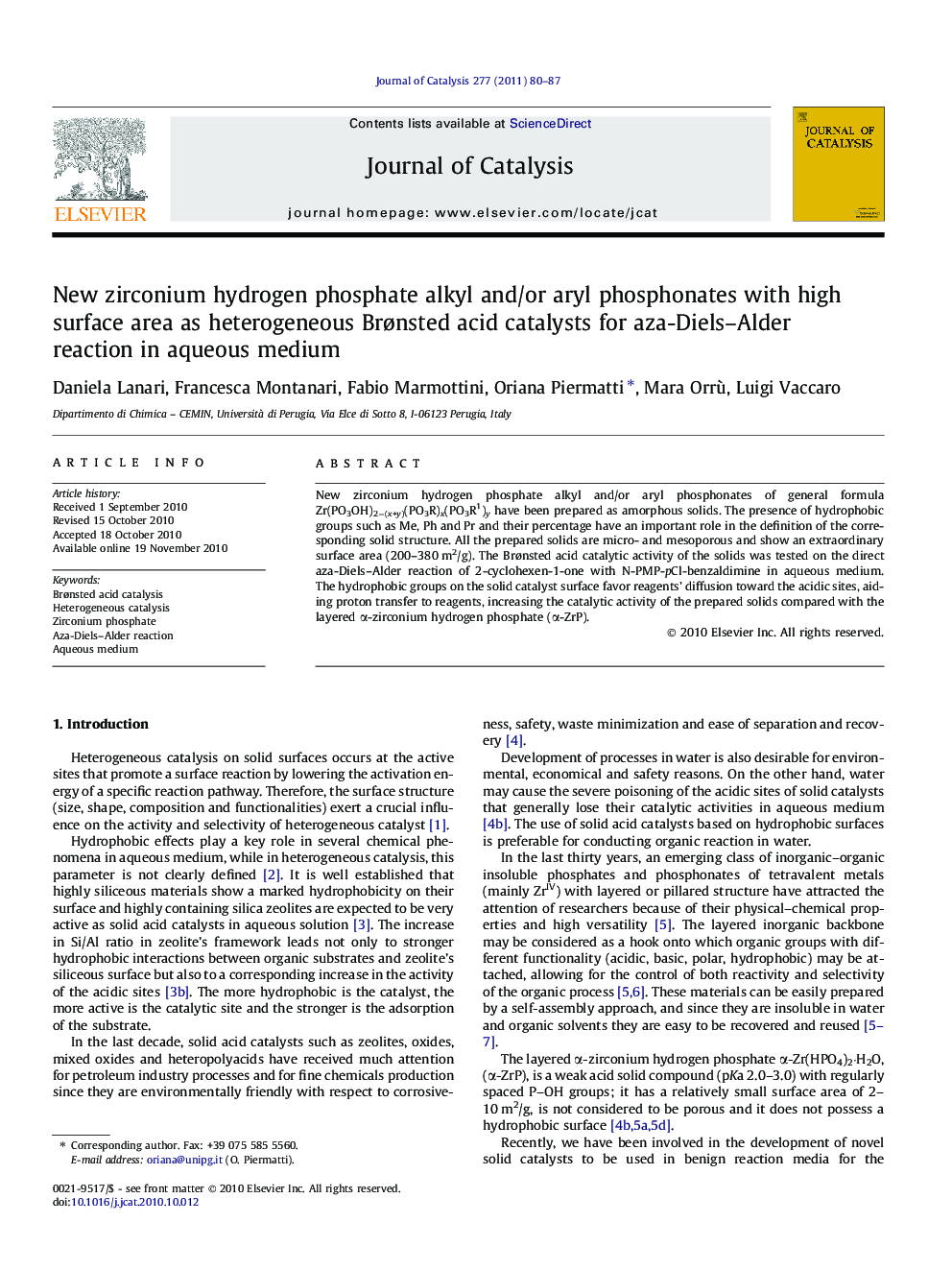| Article ID | Journal | Published Year | Pages | File Type |
|---|---|---|---|---|
| 61842 | Journal of Catalysis | 2011 | 8 Pages |
New zirconium hydrogen phosphate alkyl and/or aryl phosphonates of general formula Zr(PO3OH)2−(x+y)(PO3R)x(PO3R1)y have been prepared as amorphous solids. The presence of hydrophobic groups such as Me, Ph and Pr and their percentage have an important role in the definition of the corresponding solid structure. All the prepared solids are micro- and mesoporous and show an extraordinary surface area (200–380 m2/g). The Brønsted acid catalytic activity of the solids was tested on the direct aza-Diels–Alder reaction of 2-cyclohexen-1-one with N-PMP-pCl-benzaldimine in aqueous medium. The hydrophobic groups on the solid catalyst surface favor reagents’ diffusion toward the acidic sites, aiding proton transfer to reagents, increasing the catalytic activity of the prepared solids compared with the layered α-zirconium hydrogen phosphate (α-ZrP).
Graphical abstractNew zirconium hydrogen phosphate alkyl and/or aryl phosphonates with high surface area (200–380 m2/g) have been prepared, and their Brønsted acid catalytic activity was tested on the direct aza-Diels–Alder reaction of 2-cyclohexen-1-one with N-PMP-pCl-benzaldimine in aqueous medium.Figure optionsDownload full-size imageDownload high-quality image (73 K)Download as PowerPoint slideResearch highlights► New amorphous zirconium hydrogen phosphate alkyl and/or aryl phosphonates of general formula Zr(PO3OH)2−(x+y)(PO3R)x(PO3R1)y have been prepared. ► The solids are micro- and mesoporous and they have surprising high specific surface area (200–380 m2/g). ► The solids were tested on the direct aza-Diels–Alder reaction of 2-cyclohexen-1-one with N-PMP-pCl-benzaldimine in aqueous medium. ► The hydrophobic groups on solid catalyst surface favor reagents’ diffusion toward acidic sites increasing the catalytic activity compared with α-ZrP.
